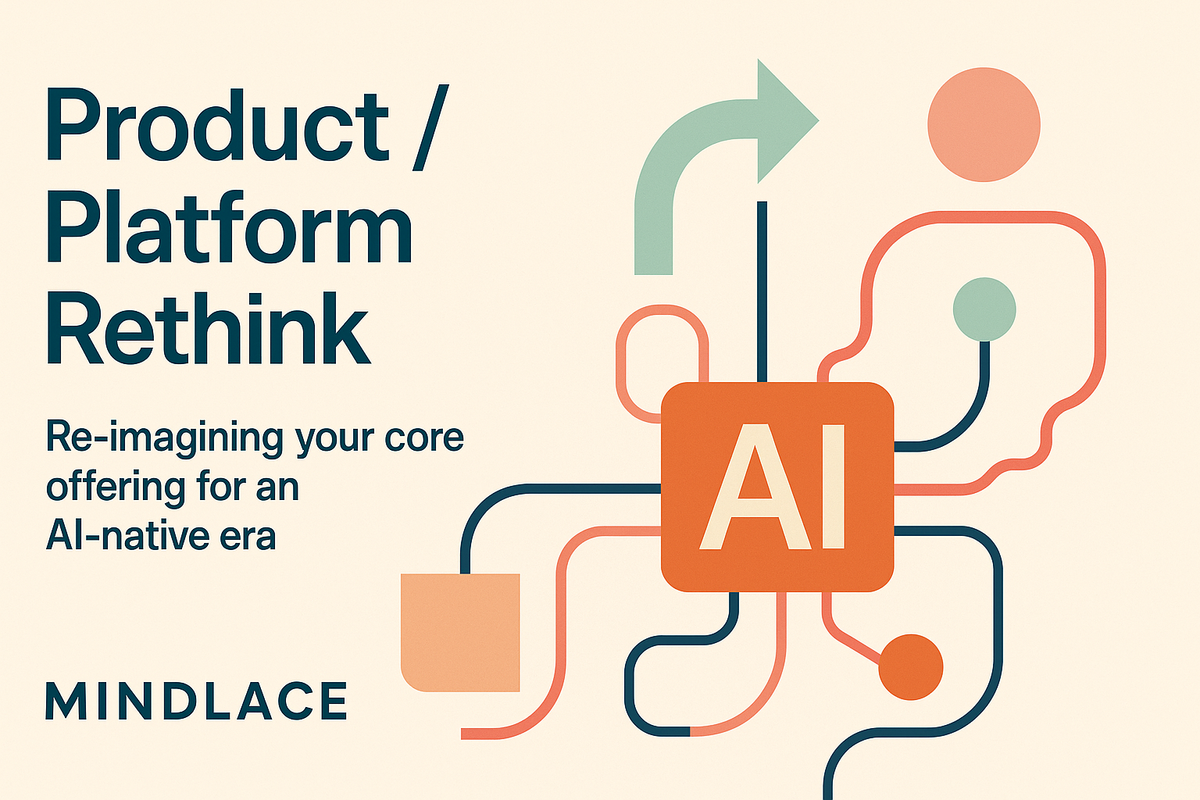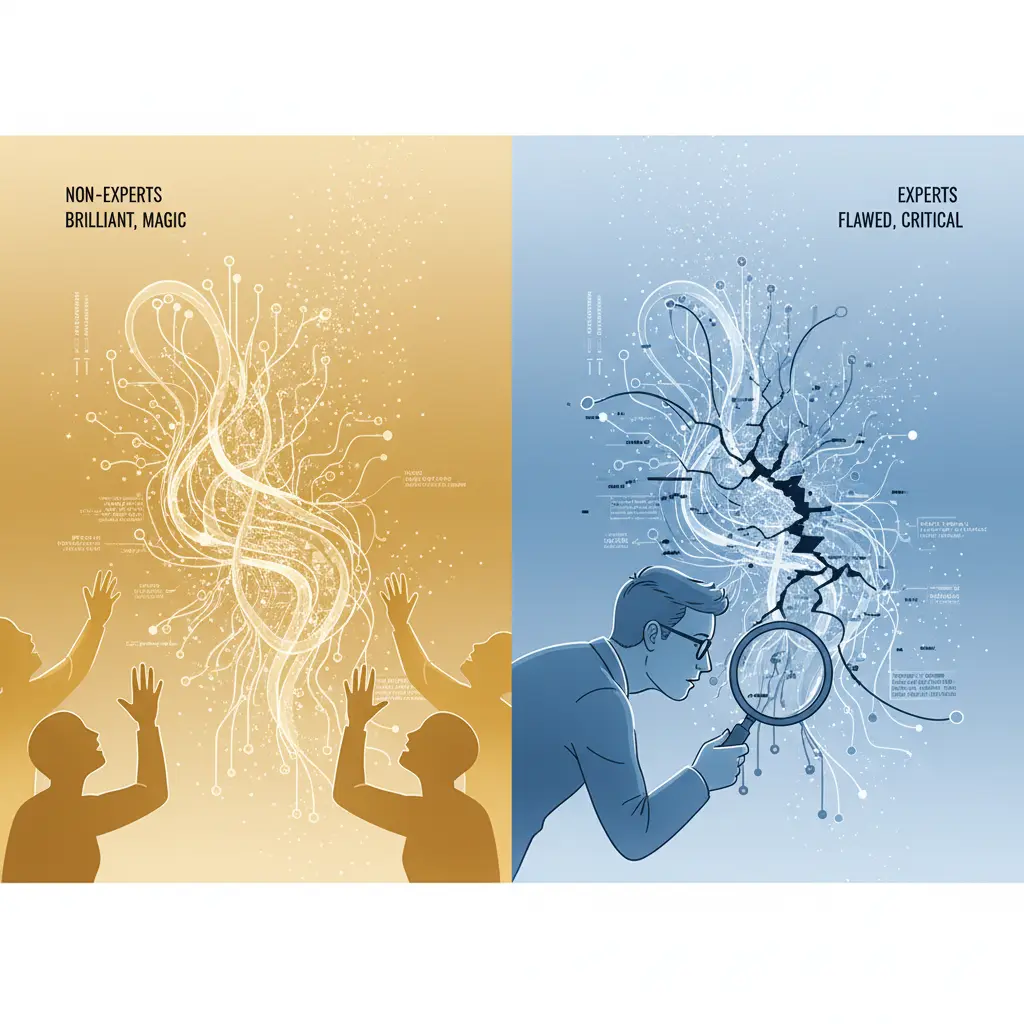Product / Platform Rethink: Re-imagining your core offering for an AI-native era

Mindlace focuses on helping companies in seven key moments. This post unpacks Moment 5 – Product / Platform Rethink: the point at which a digital product or service needs fresh traction and new revenue by embedding AI-native capabilities. See a summary of those seven moments here.
Why this moment is impossible to ignore
- AI has crossed the adoption tipping-point. 78 percent of organisations now use some form of AI in at least one business function, up from 55 percent just a year earlier (The State of AI: Global survey | McKinsey).
- Budgets are following the hype. 92 percent of executives expect to increase AI spend in the next three years, and more than half will raise it by double-digit percentages (AI in the workplace: A report for 2025 - McKinsey & Company).
- Customers reward the brands that move first. Danish telco Telmore added AI-driven personalisation to its e-commerce flow and recorded an 11 percent sales uplift versus a non-personalised baseline (Adobe 2025 AI and Digital Trends | Key Insights & Future Growth). Forrester’s CX Index shows that even modest improvements in experience translate into “tens of millions” in saved churn and extra share of wallet for mid-market brands (Forrester Releases 2024 US Customer Experience Index).
Yet Boston Consulting Group finds that 74 percent of companies are still struggling to turn AI pilots into tangible value (AI Adoption in 2024: 74% of Companies Struggle to Achieve and ...). Modernising the product itself—rather than bolting AI onto legacy code—separates the winners from the stalled majority.
Pain signals that tell you it’s time to rethink
- Usage, NPS or conversion metrics have plateaued despite incremental feature releases.
- Product teams are shackled by technical debt; the average developer now spends 17 hours a week on maintenance and “bad code”—an $85 billion drag on innovation worldwide (The Developer Coefficient - Stripe).
- Competitors begin shipping AI co-pilots, generative search or hyper-personalised pricing while your roadmap still centres on UI tweaks.
- Internal voices ask for “something bold” but lack the skills; 61 percent of product leaders cite prompt-engineering and AI ethics as immediate capability gaps (New survey: AI is here and it's reshaping product management).
What “good” looks like
- Person-level relevance at scale – think dynamic bundles, adaptive pricing or next-best-action surfaces.
- Embedded intelligence – natural-language search, contextual chat assistants and predictive dashboards natively inside the product.
- Composable platforms – API-first, event-driven back-ends ready for rapid feature swaps and partner integrations.
- Data-to-decision loops – real-time instrumentation that closes the gap between insight and iteration.
Accenture’s 2024 benchmark shows that firms which “fully modernise to AI-led processes” grow revenue 2.5× faster and scale new use-cases 3.3× more successfully than peers that merely experiment (New Accenture Research Finds that Companies with AI-Led ...).
Mindlace’s playbook for a successful rethink
1 | Diagnostic sprint (2 weeks).
We map friction across the user journey, audit data exhaust and surface the few metrics that matter.
2 | Pilot build (12–16 weeks).
A cross-functional squad of 3-8 Mindlace engineers, designers and data scientists lands a “minimum lovable” AI feature—often a co-pilot, smart recommender or vector-search knowledge base. Live users validate this in production; we don't rely on slide decks.
3 | Scale & transfer.
Successful pilots graduate to platform services: feature flags, model-ops pipelines, compliance guard-rails. Your in-house team is up-skilled en route, so the capability stays when we roll off.
We base every engagement on Pathforger, our evidence-led innovation framework, and back each sprint with an Impact Pledge—if a sprint fails to deliver, you don’t pay.
Example wins we look to unlock
- +8-12% checkout conversion by replacing static flows with LLM-driven conversational assistants that pre-fill forms and handle objections.
- 25-30% drop in support tickets when an AI copilot surfaces context-aware FAQs inside the product experience.
- 50% faster roadmap cycles once legacy monoliths are decoupled into micro-front-ends and event streams, freeing teams from release train bottlenecks.
Getting started
Mid-market operators (500–5,000 staff; £50 m-£1bn revenue) often feel these pressures first: they can’t throw headcount at shrinking margins, yet they’re big enough for every percentage point of churn to sting. The upside is just as pronounced—an 11 percent sales lift or a double-digit boost in renewal rates compounds quickly at that scale.
If your flagship product is showing signs of fatigue—or if a board slide asks “What’s our AI story?”—now is the moment to act. Mindlace can deliver a working AI-native feature in a single quarter, prove its commercial impact, and leave your team with the skills to keep building.
Ready to re-imagine what your platform can do?
Let’s start with a brief call and see where AI-native thinking can revive traction and unlock new value.
All statistics cited from McKinsey (The State of AI: Global survey | McKinsey), McKinsey Digital Investment Survey (AI in the workplace: A report for 2025 - McKinsey & Company), Adobe Digital Trends 2025 (Adobe 2025 AI and Digital Trends | Key Insights & Future Growth), Forrester CX Index 2024 (Forrester Releases 2024 US Customer Experience Index), Accenture Gen AI Operations Report 2024 (New Accenture Research Finds that Companies with AI-Led ...), BCG AI Adoption Study 2024 (AI Adoption in 2024: 74% of Companies Struggle to Achieve and ...), Stripe Developer Coefficient ([PDF] The Developer Coefficient - Stripe), and TestDouble AI Product Management Survey 2025 (New survey: AI is here—and it's reshaping product management).





